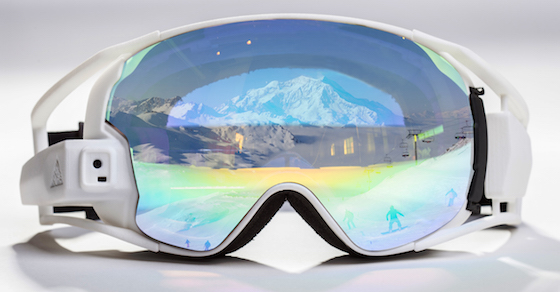RideOn, an Israeli start-up, promises to revolutionize heads-up display technology with its Augmented Reality Goggles.
Israeli start-up RideOn has come out with an augmented reality goggle, which seems to overcome many of the longstanding problems related to heads-up display technology.
In 2012, Google made headlines with its introduction of Google Glass, a new incarnation of heads-up display gear that moved the technology out of the exclusive realm of military and airline uses and into the hands of everyday people. Google Glass promised a variety of applications and information which until then had been regarded as the stuff of science fiction.
Heads-up display (HUD) technology, also known as “augmented reality,” superimposes a computer-generated image into the user’s view. This is done on the windscreen of an aircraft, the glass of a helmet or, most recently, in special goggles or glasses created for this purpose. While augmented reality technology may sound futuristic, it was first conceptualized shortly after World War II.
Unfortunately, due to a variety of issues, Google decided to delay production until it is confident that the product is truly ready for a mass market.
In the early 1950s, HUD was conceived to give pilots the ability to read crucial information without having to look away from the action in front of them. The concept became a reality for military use in the late 1950s and eventually made its way into the commercial sector in the 1970s.
While HUD technology has been around for more than half a century, it was not until Google came out with its Google Glass in 2012 that HUD showed promise for the private market.
In the last couple of years, several companies have tried to implement augmented reality technology in ski goggles. One such product has active, built-in anti-fogging technology, while another shows information on the lower corner of the glass.This presents a problem because it requires the user to look away in order to focus on the display at the bottom of the goggles. That momentary distraction could spell disaster in certain critical situations.
RideOn has advanced direct-to-eye display technology in a larger, thinner goggle that positions the transparent display directly over the eye – which means that the wearer’s vision is not obstructed, eliminating the need to look away or refocus in order to read the information. This is crucial in ski goggles when the skier is blasting down a hill full of moguls without a spare moment to turn away.
In addition to cutting-edge HUD technology, RideOn offers other goodies in its package. Inertial sensors and GPS work together to determine where the user is looking, and an integrated camera and special computer-vision algorithms identify the objects in view. All this is combined to provide other features, such as buddy tracking, navigation information and a hands-free user interface. To switch modes, the user simply looks up and decides which button to press.
While the device is still in the early stages of development, RideOn’s augmented reality goggles promise to revolutionize HUD technology and its applications in everyday consumer products. Current plans are to ship the first units to backers in September 2015.
Click here for the latest Good News from Israel.
By Penina Taylor, United with Israel
Do You Love Israel? Make a Donation - Show Your Support!
Donate to vital charities that help protect Israeli citizens and inspire millions around the world to support Israel too!
Now more than ever, Israel needs your help to fight and win the war -- including on the battlefield of public opinion.
Antisemitism, anti-Israel bias and boycotts are out of control. Israel's enemies are inciting terror and violence against innocent Israelis and Jews around the world. Help us fight back!

